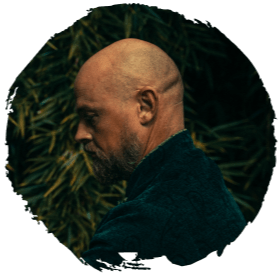Methods
weapons

In modern times, traditional weapons are no longer known and in use. Weapons and their usage are often and mostly associated with violence and fighting.
In Daoist teaching and practice the approach is a totally different one. Here, weapons and their usage play a superior and leading role.
Weapons are, not only in a metaphoric sense, tools. For example, many of the traditionally practiced weapons are but transformed objects of everyday life or common tools. As for example fan, staff, horsetail whisk or needle.
This also means that the usage of weapons and the connected abilities are just ordinary skills and though can be of usage for our spiritual development. The usage of tools is part of our becoming and being human.
With the help of a tool we can complete work easier, quicker, more effectively and better. Some tasks can only be done with the support of tools. That is exactly where training and practice with traditional Daoist weapons goes.
Learning the usage of weapons helps us accelerate our inner work and development, exponentiates our power, gathers and sharpens our concentration, makes our practice more precise and more effective.
Weapons function as elongation and extension of the body. They teach us to connect to an object and become one, from our center to the periphery and beyond. All traditional weapons teach us to direct Qi and challenge us in their diversity, their weight, length, properties and qualities.

Path of Dao teaches:

Fan (Shàn):
A fan can cool us down and offers shadow and protection in the heat. In its use, we can move warm and stagnant air to refresh us. In Feng Shui as well the fan is approved and stands for the qualities of movement, transformation and protection.
By learning the skills of the fan, we learn to change situations of life in a powerful and effective way, as well as to protect ourselves from certain influences. The movements of the fan are very fiery and performative and by this it is the weapon of an artist.
Zhongli Quan, one of the eight Daoist immortals is represented with a fan. Zhong Kui, the demon hunter, is often depicted with a fan and a sword.





Horsetail whisk (Fu Chen):
Fu Chen is a weapon of Daoist origin. It is a horsetail, fixed on a handle and was used to chase flies or other insects away during times of contemplative study of books or writings. Therefore, the horsetail whisk is referred to as the weapon of the (Daoist) scholar.
This is exactly the spirit and the skill we reach by training this weapon.
We protect ourselves from distraction and chase bothering thoughts away in order to maintain a deep concentration and stillness.
Lü Dongbin, one of the eight Daoist immortals, is represented with horsetail whisk and sword.

Sword (Jiàn):
Cut, Separate, Focus, Metal, Mirror, Clarity.
The sword is a weapon well known in the West, even though the Western sword and his application cannot be compared with the Chinese sword. Nevertheless, also in the West we find the sword displayed in many symbols or emblems. Mostly it stands for aspects of justice and right, distinction and wisdom. The sword consists of metal, has two blades and a point, which embodies distinction and separation, clarity and the ability of bringing things to the point. Therefore, the sword is known as the weapon of the wise.
Zhongli Quan, one of the eight Daoist immortals is represented with a fan. Zhong Kui, the demon hunter, is often depicted with a fan and a sword.


Discover our Methods

QI GONG
“When it (the Qi) goes down it becomes quiet. When it becomes quiet it will concentrate. When it becomes concentrated it will begin to sprout. After it has sprouted it will grow. As it grows, it will rise up (to the upper regions). When it has risen up it will reach the crown of the head. Above, it will press against the crown of the head. Below, it will press downwards. Whoever follows this will live, whoever acts contrary to it will die.”
First document of “Dao Yin” - carved in two Jade stones about 600 b.C.

MEDITATION
Meditation is not sitting still, Meditation is sitting in stillness – cultivation of stillness.

INNER MARTIAL ARTS
When it comes to (inner) martial arts, most people think of fighting and rough violence, physical confrontation – they see how sheer physical strength overcomes the weak violently, possibly with some tricks or magical superhuman powers. That is not at all what it is about. That’s not how we perceive things…

TAIJIQUAN
Tai means the highest, the ultimate, the complete. Ji stands for a state of…, for principle, order or just for being. Put together we could say: a state of complete being. A principle of highest, ultimate order. Quan originally stands for fist and refers to martial arts in general, which are named Quanfa in Chinese. So, we are talking about the usage and skills of our hands. We talk about acting and action.


